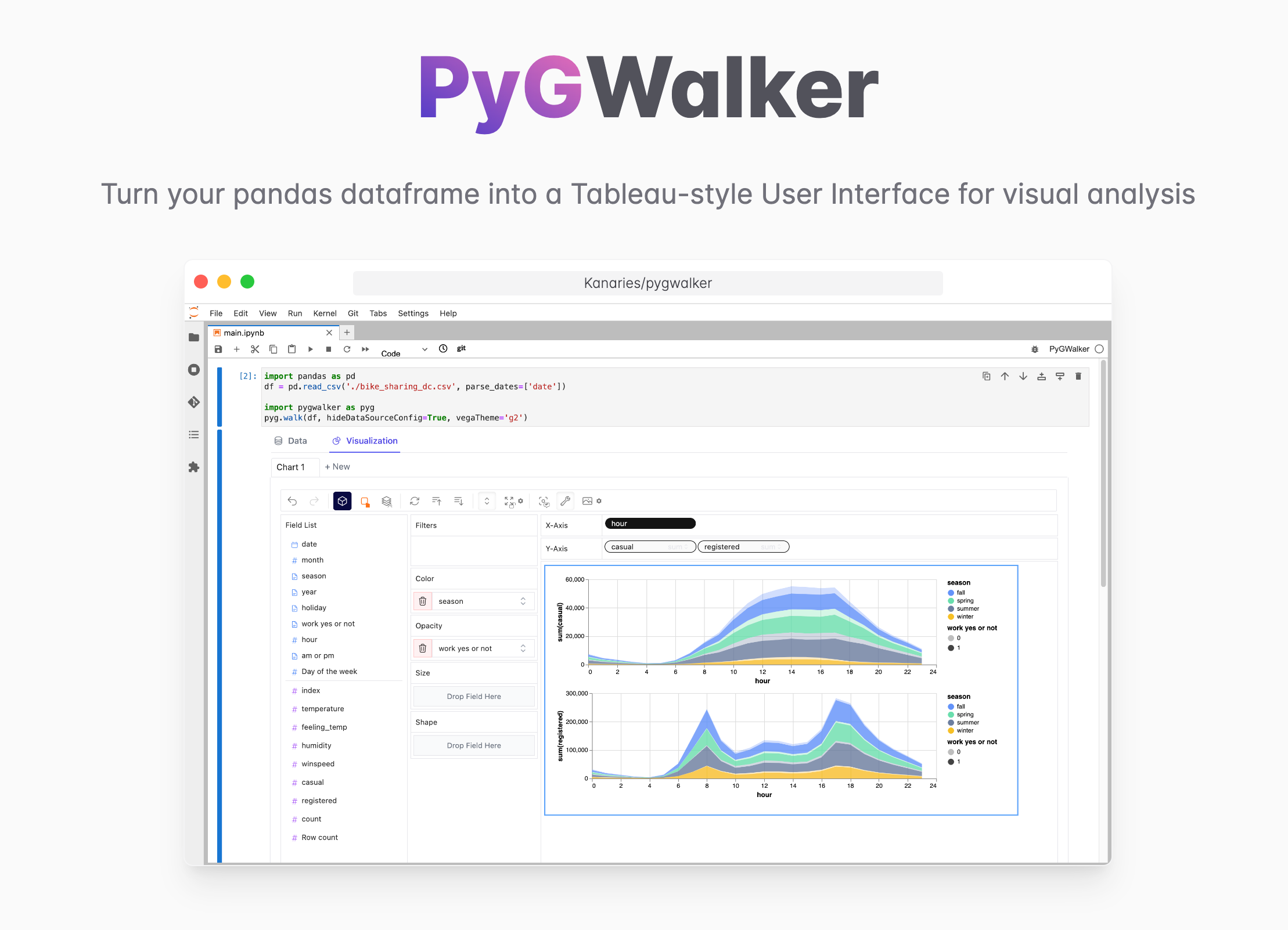PySpark Select, Filter, and withColumn: Core DataFrame Recipes
Updated on
Messy DataFrames slow every pipeline: wrong columns, unsafe filters, and fragile casts create silent errors. Teams need repeatable patterns for selecting, filtering, and deriving columns to keep Spark jobs predictable.
PySpark’s select, filter/where, and withColumn APIs solve this by keeping transformations explicit, type-safe, and testable. This guide shows the key patterns and how to avoid common pitfalls.
Want to quickly create Data Visualization from Python Pandas Dataframe with No code?
PyGWalker is a Python library for Exploratory Data Analysis with Visualization. PyGWalker (opens in a new tab) can simplify your Jupyter Notebook data analysis and data visualization workflow, by turning your pandas dataframe (and polars dataframe) into a tableau-alternative User Interface for visual exploration.
Reader’s map
| Task | API | When to use |
|---|---|---|
| Pick/rename columns | select, alias | Keep only needed columns; avoid selectExpr when simple |
| Row filtering | filter / where | Both identical; chain conditions with & and ` |
| Derived/conditional columns | withColumn, when/otherwise | Add or replace columns with logic |
| SQL-like expressions | selectExpr, expr | Quick arithmetic or SQL functions without many imports |
| Safe casting | cast, try_cast (Spark 3.5+) | Enforce types without throwing on bad values |
Setup and sample data
from pyspark.sql import SparkSession
from pyspark.sql import functions as F
spark = SparkSession.builder.appName("select-filter-withcolumn").getOrCreate()
df = spark.createDataFrame(
[
(1, "Alice", "2025-11-01", "premium", "42"),
(2, "Bob", "2025-11-02", "basic", "x"),
(3, "Cara", "2025-11-02", None, "7"),
],
"id INT, name STRING, signup_date STRING, tier STRING, score STRING",
)Select only what you need
slim = df.select(
"id",
F.col("name").alias("customer_name"),
F.to_date("signup_date").alias("signup_dt"),
)selectkeeps projections explicit and avoids wide scans.- Use
aliasfor friendly names.
Filter / where: identical APIs
active = slim.where(
(F.col("signup_dt") >= "2025-11-01")
& (F.col("customer_name") != "Bob")
)filterandwhereare the same; choose one for readability.- Combine conditions with
&and|; wrap each condition in parentheses. - Null checks:
isNull()/isNotNull()avoid surprises.
withColumn for derived and conditional values
scored = active.withColumn(
"score_int",
F.when(F.col("score").rlike("^[0-9]+$"), F.col("score").cast("int"))
.otherwise(None),
)withColumnadds or replaces; keep names unique to avoid accidental overwrite.when/otherwisesets clear branch logic.
selectExpr for quick expressions
expr_df = df.selectExpr(
"id",
"upper(name) AS name_upper",
"to_date(signup_date) AS signup_dt",
"CASE WHEN tier = 'premium' THEN 1 ELSE 0 END AS is_premium",
)- Handy for SQL-style calculations without many
functionsimports. - Keep complex logic in regular
withColumnfor readability and testing.
Safe casting patterns
typed = (
df
.withColumn("score_int", F.col("score").cast("int"))
.withColumn("signup_ts", F.to_timestamp("signup_date"))
)- Prefer explicit casts; avoid relying on schema inference from CSV sources.
- On Spark 3.5+,
try_castreturns null instead of failing on bad values.
Quick checks for data quality
from pyspark.sql import functions as F
bad_counts = df.select(
F.sum(F.col("score").rlike("^[0-9]+$").cast("int")).alias("valid_scores"),
F.sum(F.col("score").rlike("^[^0-9]").cast("int")).alias("invalid_scores"),
)- Validate before writing; small aggregations surface issues early.
- Use
count+isNullto gauge missing rates on key columns.
Common pitfalls and fixes
- Unparenthesized conditions: always wrap each boolean clause when using
&/|. - Accidental column overwrite: check
df.columnsor use new names withwithColumn. - String dates without parsing: convert with
to_date/to_timestampbefore comparisons. - Null-sensitive comparisons: rely on
isNull/isNotNullto avoid three-valued logic surprises.
Minimal pipeline example
clean = (
df
.select("id", "name", "signup_date", "tier", "score")
.where(F.col("tier").isNotNull())
.withColumn("signup_dt", F.to_date("signup_date"))
.withColumn(
"score_int",
F.when(F.col("score").rlike("^[0-9]+$"), F.col("score").cast("int")),
)
)This keeps selections tight, filters explicit, and derived columns typed before downstream writes.
